Everything’s Bigger in Texas: the long-lasting motto of the Lone Star state. This enhanced size covers everything from big hats to large cowboy attitudes to huge zoos! In terms of number of visitors, the Houston Zoo is second only to the San Diego Zoo. Each year, more than two million people pass through its gates.
Situated inside the popular Hermann Park, the Houston Zoo sprawls over 55 acres. Additionally, it allows guests to view more than 6,000 animals, ranging across 900 different species.
Tickets
For visitors who aren’t Houston Zoo members, online reservations are required. Purchase an electronic ticket; zoo employees will scan it upon arrival. The Zoo closes at 5:00 p.m. and the last entry is at 4:00 p.m. Gates open at 9:00 a.m. daily.
Best Time to Visit
Ideally, the best time to go is in the morning. Arriving when the gates first open will ensure cooler temps and more active animals. This is a great time to arrive because the animals have all been served their breakfast and will likely be more playful in their outdoor enclosures. Bears and the big cats are often quite active before 10:00 a.m.
Another reason guests should arrive early is to beat the heat. Also, visiting during the weekdays will usually mean smaller crowds when compared to weekends.
All the Animals
There are 10 exhibits that have animals on display, along with a platform to feed giraffes, a children’s zoo, and a wildlife carousel. Here’s a look at the different exhibits and the animals residing in each one.
Wortham World of Primates
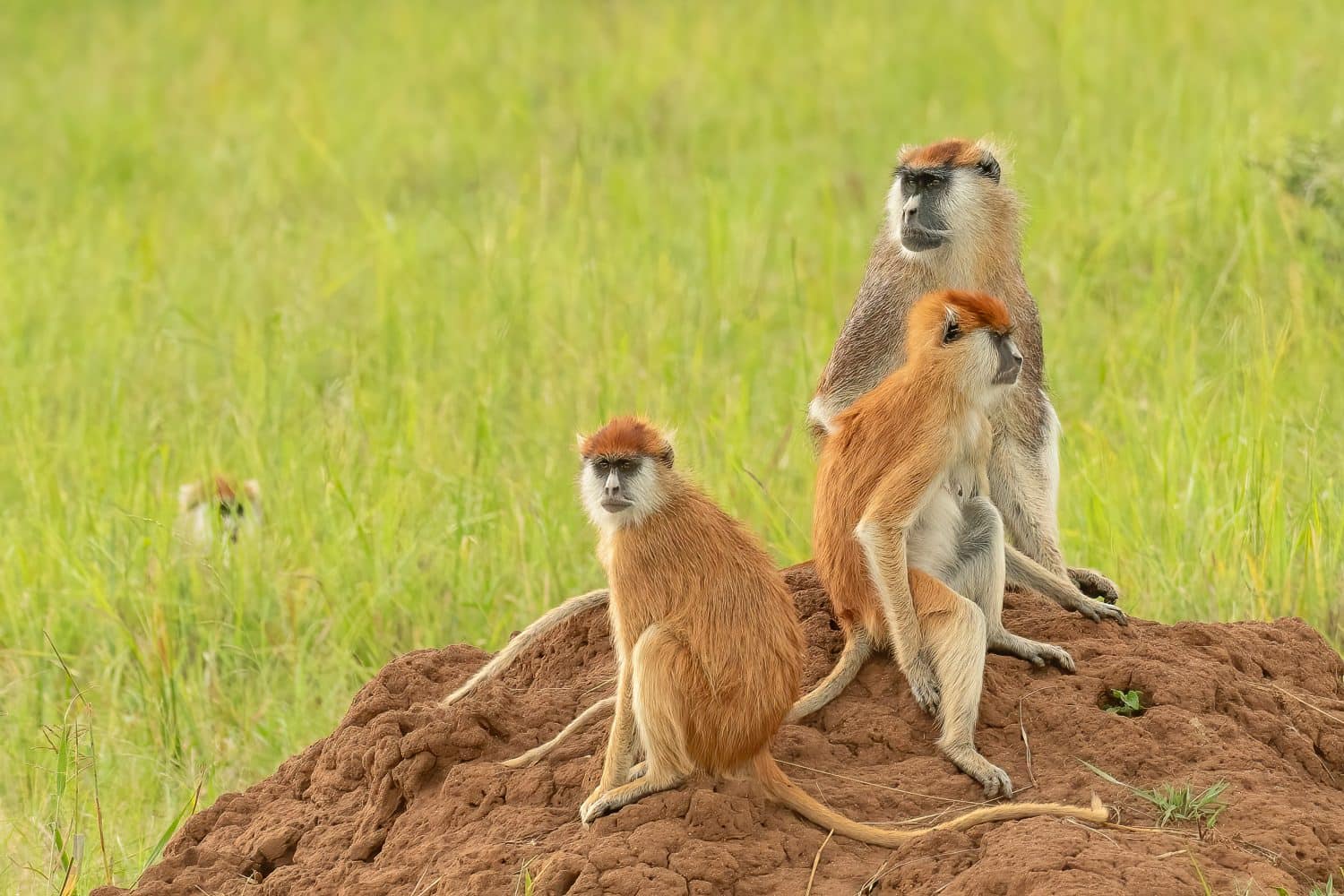
The Patas monkey is considered to be the fastest primate.
©Tomas Drahos/Shutterstock.com
A winding boardwalk in a natural setting leads to up close and personal sightings of many rare and endangered primates. Visitors have the chance to view northern white-cheeked gibbons, orangutans, Patas monkeys, Siamangs, and Malaysian painted river terrapins. Also, golden-headed lion tamarins and Coquerel’s sifakas reside within this exhibit.
Kathrine G. McGovern Texas Wetlands
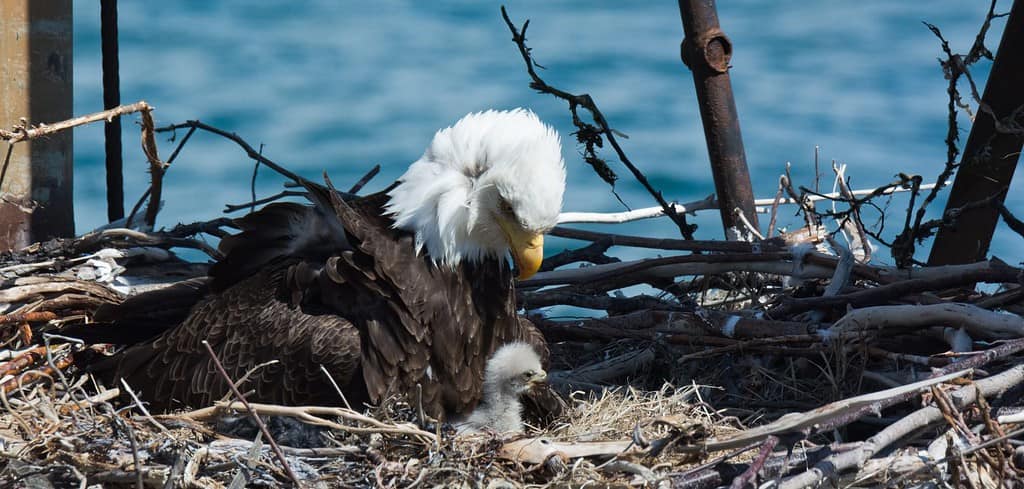
©Jon C. Beverly/Shutterstock.com
This exhibit opened to the public in May of 2019 and houses three native Texas species. The American alligator, bald eagle, and whooping cranes can be seen throughout this exhibit.
South America’s Pantanal

Giant otters can grow to 6 feet in length.
©Johnny Giese/Shutterstock.com
This exhibit brings the tropical wetlands of Brazil to the Houston Zoo. A variety of animals are housed here, including the blue-billed curassow, giant river otter, golden lion tamarin, and the jaguar. Additionally, sightings of the giant anteater, capybara, green anaconda, and blue-throated macaw are possibilities. The black-and-gold howler monkey and the Baird’s tapir complete the list of animals within this exhibit.
Reptile and Amphibian House

The Amazon milk frog is one of the unique amphibians at the Houston Zoo.
©Kurit afshen/Shutterstock.com
Within this exhibit, guests of the Houston Zoo can see some of the most exotic amphibians and most venomous snakes. The black mamba, reticulated python, Komodo dragon, and the king cobra are on display. Additionally, the Amazon milk frog and Panamanian golden frog are housed here.
McNair Asian Elephant Habitat Area
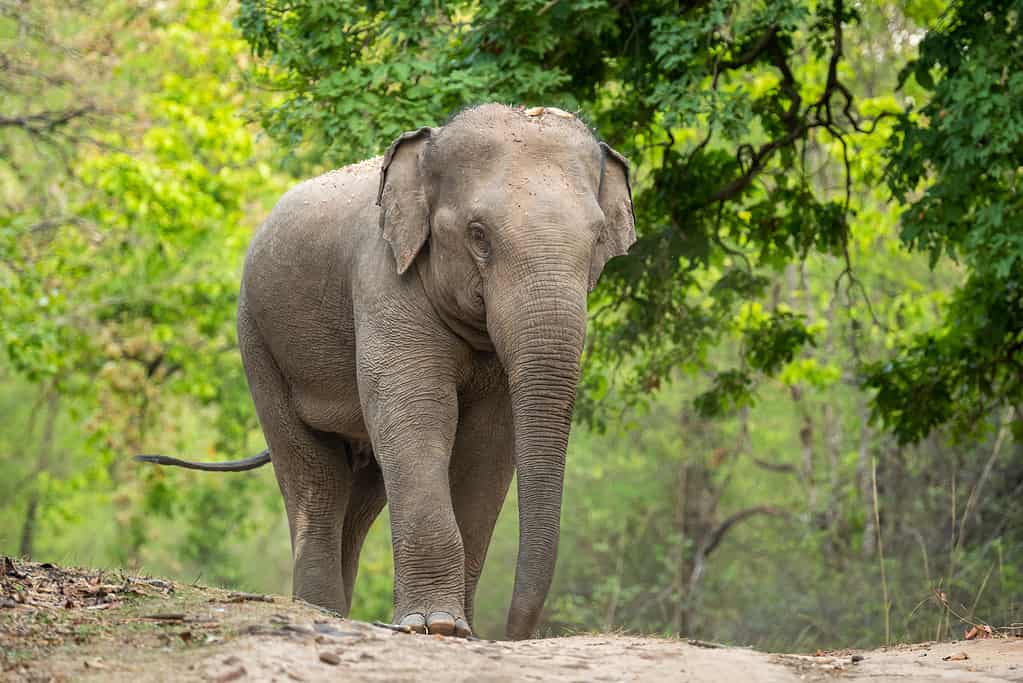
Elephants
at this Texas zoo benefit from an ultra-large habitat.
©Sourabh Bharti/iStock via Getty Images
In 2017, this habitat was doubled in size. The Houston Zoo added a 7,000-square-foot barn. Additionally, this expansion added a boardwalk and a gigantic, 160,000-gallon swimming pool. Guests to this exhibit can view elephants playing in the water or resting inside the barn.
John P. McGovern Children’s Zoo
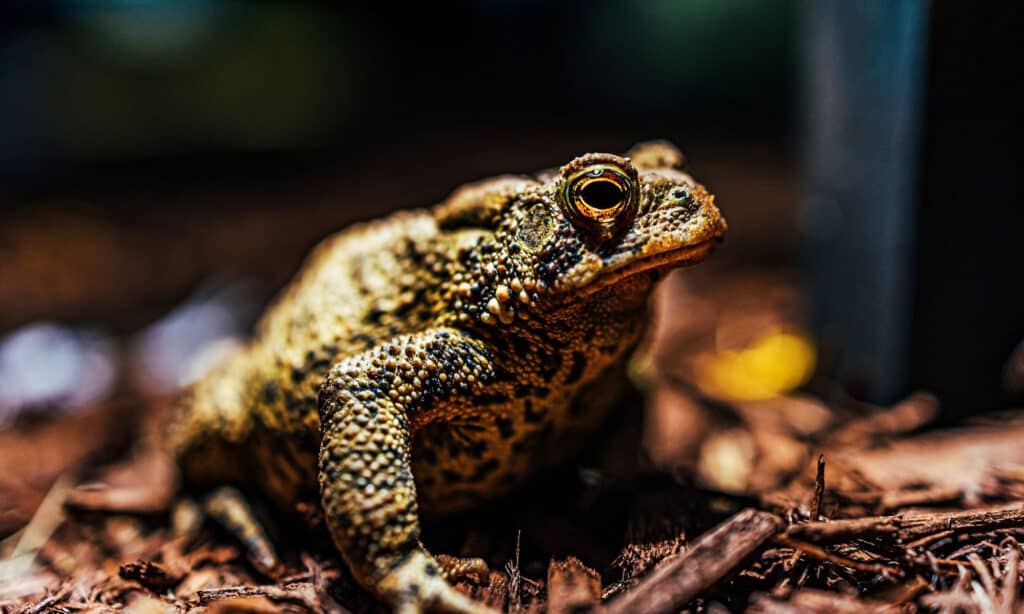
The Houston toad is endemic to Texas.
©Wirestock Creators/Shutterstock.com
Guests can make a stop at this exhibit daily, from 9:30 a.m. until 4:30 p.m. It is closed from noon until 1:00 p.m. each day for lunch. A few animals within this exhibit include the domestic goat, the Houston toad, the North American river otter, and Seba’s short-tailed bat.
Giraffe Feeding Platform
To feed giraffes, guests head up a ramp that leads to a shaded feeding area. Take in the views of the ostriches and giraffes and provide them with a lettuce leaf snack. Feedings are 11:00 a.m. and 2:00 p.m. daily.
Galapagos Islands

These California sea lions appear to have a conversation.
©663highland / CC BY-SA 3.0 – License
The newest exhibit at the Houston Zoo, this area displays the unique landscapes and oceanic habitats of the Galapagos Islands. Guests can expect to see the California sea lion, Galapagos tortoise, Humboldt penguin, and the bonnethead shark.
African Forest
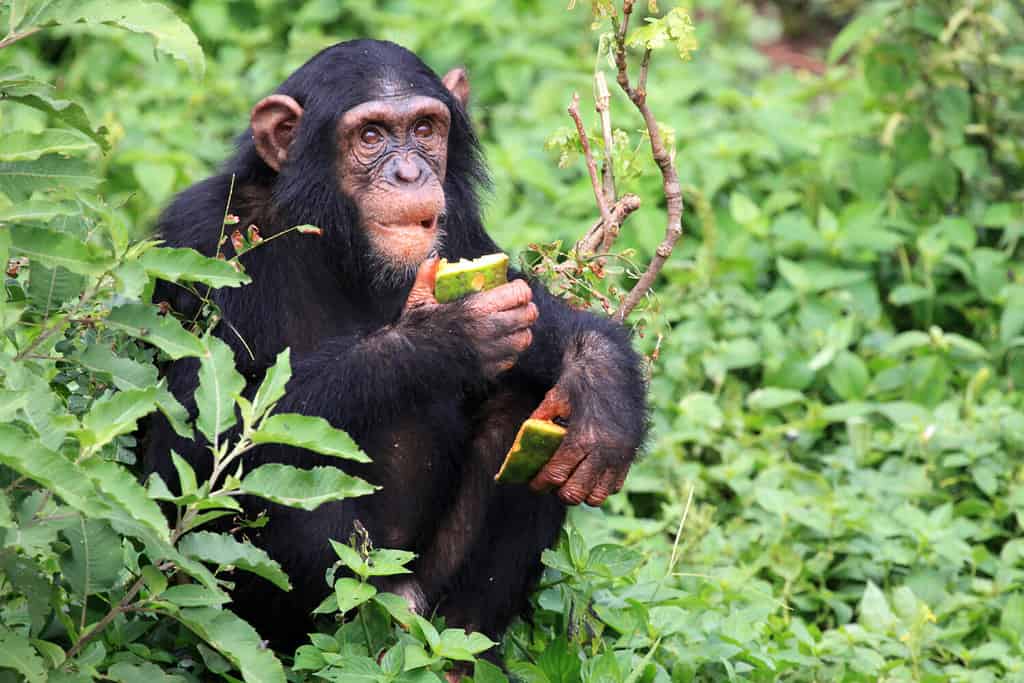
Chimpanzees are a favorite species within the Houston Zoo.
©Sam DCruz/Shutterstock.com
Guests headed to this exhibit will hike down a path that leads to a village trading outpost. Visitors can explore round, small huts that surround firepits. See the chimpanzee, ostrich, red river hog, and the southern white rhinoceros. Additionally, the gorilla and Masai giraffe are housed within this exhibit.
Bird Habitats
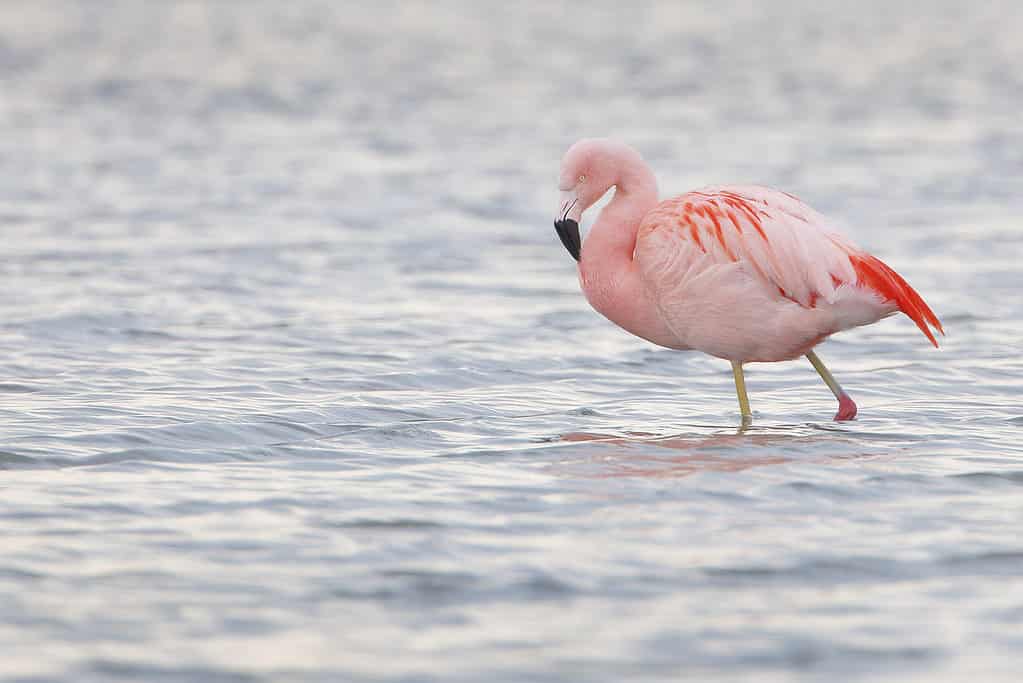
Chilean flamingoes (
Phoenicopterus chilensis) have been spotted as far north as the Netherlands.
©iStock.com/WMarissen
The Houston Zoo tops the list of United States’ zoos with the most birds. Located within exhibits such as the Savanna and Waded Bird, over 800 individual birds from more than 200 species can be seen.
On hand within this exhibit are the blue-throated macaw, Chilean flamingo, wattled curassow, and the blue-billed curassow.
The Bug House
A part of the Houston Zoo since 2014, this exhibit houses spiders, bugs, and insects. From behind the glass enclosures, guests can view these small residents that come from jungles, deserts, and forests around the world.
Carruth Natural Encounters

Naked mole rats guard their underground tunnels.
©Neil Bromhall/Shutterstock.com
Animals within this exhibit hail from the rainforest canopy, coral reef, desert, and the river’s edge. Meerkats, moon jellyfish, and the naked mole rat can be found here. Additionally, red-belled piranha, white-faced Saki monkeys, and Asian small-clawed otters are on hand for visitors to enjoy.
It’s possible to browse through all the exhibits in one visit. Picking up a map upon arrival will help ensure you hit the exhibits in the correct order.
The photo featured at the top of this post is © Rasar90, CC BY-SA 4.0
Thank you for reading! Have some feedback for us? Contact the AZ Animals editorial team.







